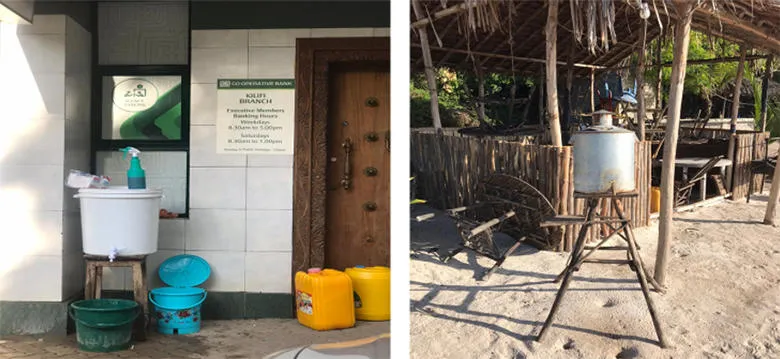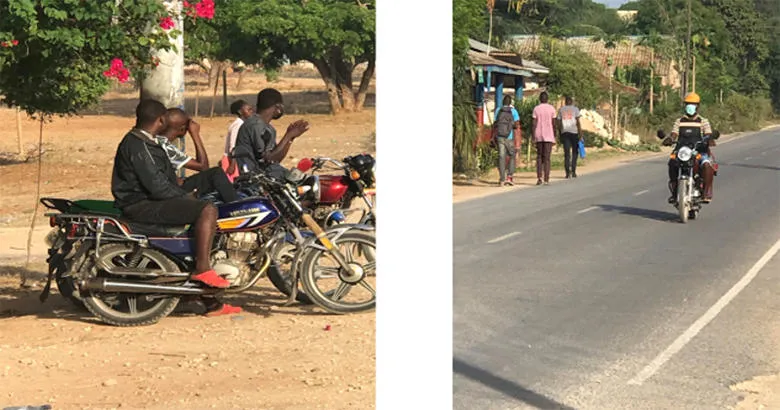Living in a COVID-19 ‘hotspot’ in rural coastal Kenya
Mary A Bitta
7 April 2020
Like many parts of the world, Kenya has felt the crippling effect of the COVID-19 pandemic with majority of services coming to a standstill in line with the government’s strict regulations of self-isolation and physical distancing. Some of the tough measures include closing all schools, places of worship and recreational centres like pubs and public parks, stopping all international flights except cargo planes and those landing to evacuate foreign nationals, a countrywide curfew from 7.00 pm-5.00 am, and more recently, a 21-day containment order in the four hardest hit counties: Kilifi, Mombasa, Nairobi and Kwale. This means that no persons can travel into or out of these counties for the next three weeks, news that has not been received well by the residents of Kilifi county.
Kilifi, a predominantly rural coastal county, is one of the country’s hardest hit regions by the COVID-19 pandemic. It is also one of the poorest regions in Kenya with majority of the people living from hand to mouth and mostly relying on a daily income from manual jobs to make ends meet. Ironically, as the number of COVID-19 cases increase, residents of Kilifi county seem to relax their previously stringent handwashing and physical distancing routines that were observed when the pandemic initially hit the county. As one walks through the streets of Kilifi or along its sandy beaches today, it is not surprising to see throngs of people who are not practising physical distancing or handwashing points which no longer have running water or soap.
 This photograph was taken this morning (Tuesday 7th April 2020) from one of Kilifi’s beaches. With schools closed and no clear guidelines of how to conduct home schooling or keep children engaged and isolated, most of the parents are allowing their children to play outside with other children, far away from home. Adults alike are conducting their businesses as usual. For example, collecting firewood along the beaches is a common early morning practise and as seen in this photograph, some adults are looking for firewood along the beach.
This photograph was taken this morning (Tuesday 7th April 2020) from one of Kilifi’s beaches. With schools closed and no clear guidelines of how to conduct home schooling or keep children engaged and isolated, most of the parents are allowing their children to play outside with other children, far away from home. Adults alike are conducting their businesses as usual. For example, collecting firewood along the beaches is a common early morning practise and as seen in this photograph, some adults are looking for firewood along the beach.
 In the early days of the pandemic, it was common to see handwashing points such as the ones shown in this picture in every place. The image on the left was taken outside a banking hall while that on the right was taken in a resting area at the beach. As seen on the left image, refilling the handwashing points required use of jerry cans because of the distance between the handwashing point and the source of water. This could be one of the reasons why the handwashing practise has dwindled in the last week.
In the early days of the pandemic, it was common to see handwashing points such as the ones shown in this picture in every place. The image on the left was taken outside a banking hall while that on the right was taken in a resting area at the beach. As seen on the left image, refilling the handwashing points required use of jerry cans because of the distance between the handwashing point and the source of water. This could be one of the reasons why the handwashing practise has dwindled in the last week.
Residents are having a hard time understanding the concept of physical distancing and self-isolation with some even wondering what the local Swahili language equivalents are for these practises. Practises such as the use of motorbikes as a mode of transport, that invariably causes close contact between the driver and multiple people per day, remain unchanged, despite the government’s strict warnings. In the present circumstances where the government has provided no directives on how it will cushion citizens from the far-reaching consequence of measures such as containment, one can hardly blame the residents of Kilifi. They are faced with very limited choices: (i)to either stay at home and avoid contacting the COVID-19 pandemic, but also risk the consequences of lack of basic requirements such as clean and safe drinking water and food or (ii) to go out to public places and risk contracting the virus but acquire their basic requirements. The situation has further been complicated by incidences such as some senior government officials and religious leaders refusing to follow self-quarantine regulations and consequently testing positive for the virus, having had contact with large crowds of people in public gatherings, leading many people to be put in isolation units. Majority of those in isolation units, many of who tested negative initially, await retesting, to establish whether they were infected by the virus.
Some of the hardest hit people are health care providers, particularly those providing care for chronically ill patients such as those with mental illness. Although these practitioners have received basic training on how to handle patients who present with symptoms suggestive of COVID-19, recommended protective equipment is limited in supply thus putting them at constant risk of contracting the infection, should their clients be infectious. In spite of this, they continue to provide essential services routinely, placing all their trust in the government to safe guard their wellbeing through the measures that have been put in place such as screening of all patients at all entry points in the hospitals before they report to their respective clinics.
 Motorcycle riders, locally referred to as “boda boda”, waiting for clients in Kiwandani estate, Kilifi county. Use of protective equipment like masks is variable. Some riders like the one in the right wear masks while others like those in the left neither wear mask nor observe physical distancing.
Motorcycle riders, locally referred to as “boda boda”, waiting for clients in Kiwandani estate, Kilifi county. Use of protective equipment like masks is variable. Some riders like the one in the right wear masks while others like those in the left neither wear mask nor observe physical distancing.
Kilifi is not all doom and gloom. The county government has made efforts to provide hand washing equipment at strategic places such as bus stations and near major shopping centres and markets. It has also supported diagnostic and research efforts through collaboration with the KEMRI-Wellcome Trust Research Programme which is based in the county and is working closely with the National Government to test and genotype samples from persons in isolation throughout the country. However, like everyone else in the world, the residents of Kilifi are in a limbo wondering when they will resume to, at the very least, a semblance of normalcy.
By Mary A. Bitta
Kilifi resident | Views are my own | Copyright to all images are my own

Mary Bitta is a graduate of the Global Mental Health MSc programme (2016-17).She is a nurse by training, currently undertaking her doctoral studies at the University of Oxford's Department of Psychiatry. Her research interests are in mental health interventions that lower the treatment gap of common mental disorders in rural areas of low-income countries. Mary's present work is based in Kilifi county, in coastal Kenya where she has lived and worked for 5 years.